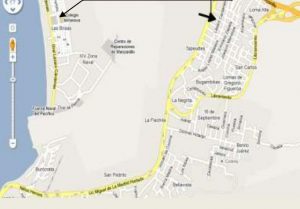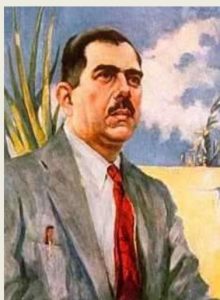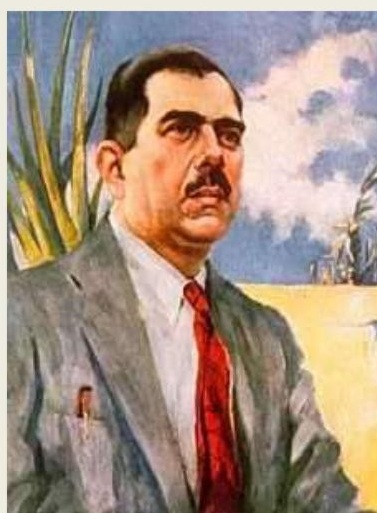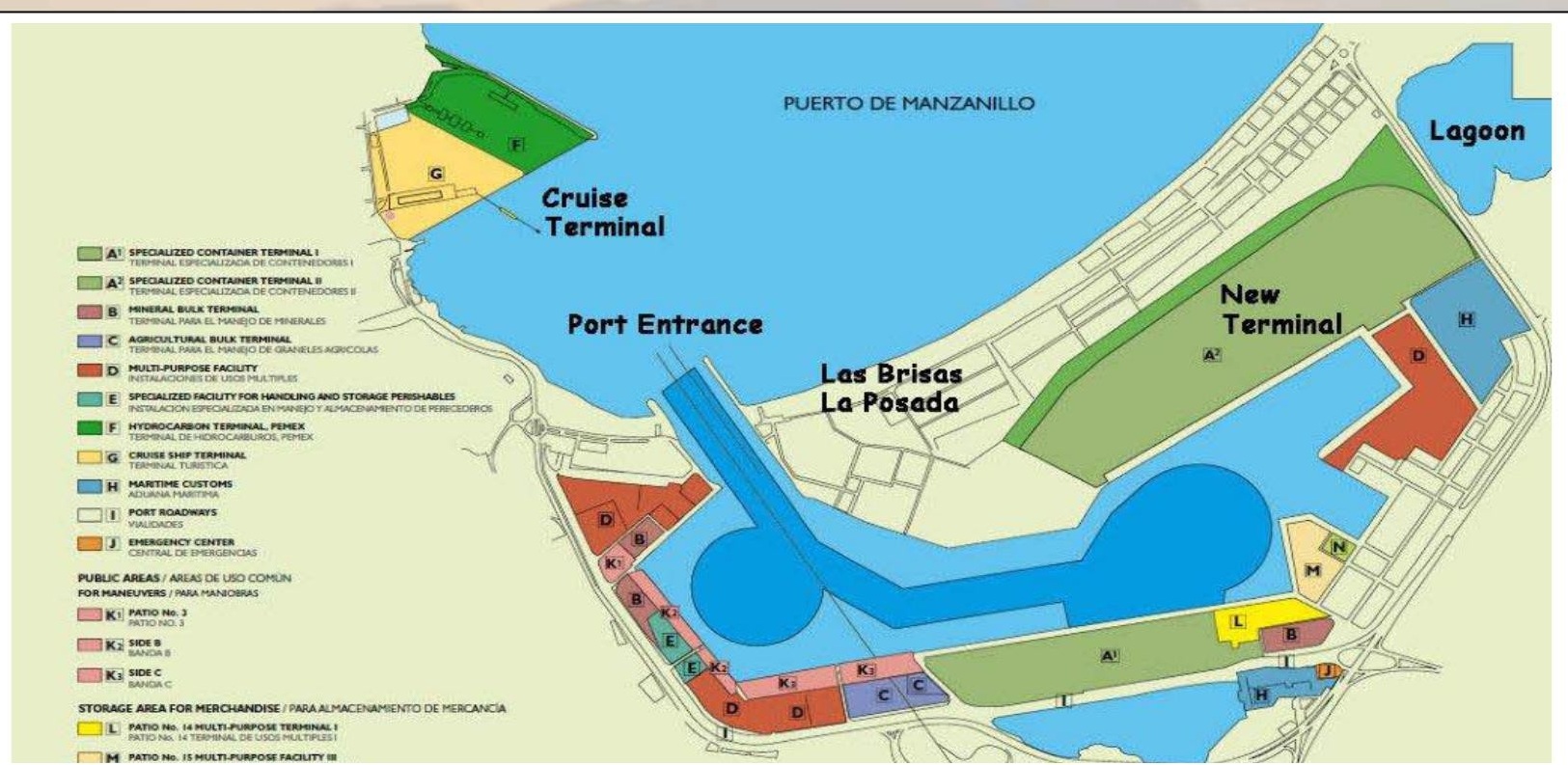By Terry Sovil from the January 2011 Edition
 President of the People
President of the People
1895-1970
Born: 21 May 1895
Birthplace: Jiquilpán de Juárez, Michoacán Died: October 19, 1970
Place of Death: Mexico City, Mexico
Best Known As: President of the People
 Lázaro Cárdenas was born of mixed white and Tarascan Indian ancestry in Jiquilpán de Juárez, Michoacán on May 21, 1895. He was the elder son of a shopkeeper leaving school after the fourth grade to work in a tax office. After his father’s death in 1911 he became caretaker to 7 brothers and sisters.
Lázaro Cárdenas was born of mixed white and Tarascan Indian ancestry in Jiquilpán de Juárez, Michoacán on May 21, 1895. He was the elder son of a shopkeeper leaving school after the fourth grade to work in a tax office. After his father’s death in 1911 he became caretaker to 7 brothers and sisters.
He was deeply affected when the Mexican
Revolution (1910-11) began. President Francisco Madero had led in the overthrow of Porfirio Díaz and was taken prisoner and killed by General Victoriano Huerta. Huerta seized control of the government. His repressive dictatorship immediately provoked a civil war. Cárdenas, age 18, joined the revolutionary army and within a year was a captain.
farmer. In 1915, a lieutenant colonel, he joined with General Plutarco Elias Calles, another future President. Huerta was in exile and Obregón and Venustiano Carranza were fighting Poncho Villa. Carranza became President but established a corrupt government. In 1920 Obregón and Calles joined a successful rising against Carranza. Obregón became President with Calles his successor. Cárdenas was named General at age 25.
His honesty never wavered. In 1920 while serving as a military commander in oil-rich Huasteca country, he was offered bribes, including a new car, from foreign oil companies. He rejected these offers and his contempt for these efforts probably played a role in his decision to national Mexico’s oil deposits.
Calles went on to become President of Mexico and in 1928 Cárdenas became governor of his home state, Michoacán. He served until 1932. He supported land reform, education and was a friend to labor and peasant organizations. His reputation as an honest military man was mirrored in his service to the people. In the following years Cárdenas served as minister of the government and as minister of war.
While governor of Michoacán Cárdenas worked on forming the National Revolutionary Party (PNR) in 1928. In 1929 he was chosen as the party’s president. He worked to transform the party into a national party and a major element in the national regime.
Cárdenas support for Calles resulted in Calles nominating him as the presidential candidate for PNR in 1934. Calles ruled through a series of puppets, even after Cárdenas election, and he thought he would be able to control Cárdenas. But with the Depression and economic hardship people rallied to Cárdenas as a reformer. Even with certain election, Cárdenas spent the year between nomination and election visiting virtually every city, town, and village in the country. He met and greeted both leaders and peasants building a loyal following everywhere in the country.
Along with Cárdenas nomination the PNR announced a Six Year Plan of political and social reform. Cárdenas took it seriously and worked on it during his 6 year term.. included:
1) restoration of the system of ejidos (common lands) to combat domination of large haciendas;
2) modern secular schools teaching rationalist doctrines combating “fanaticism” of the Church; 3) establishing workers’ cooperatives opposing excesses of industrial capitalism.
At age 39, one of the youngest President’s, his style was unique. He didn’t live Chapultepec Castle, cut his salary in half and was inaugurated in a business suit not a military uniform. He caused 50 bronze busts of himself to disappear. He received barefoot country people while politicos, generals and businessmen waited.
He moved cautiously his first year. Calles still had strong influence in the government. Calles, feeling Cárdenas was too sympathetic to striking workers, launched a plan to remove him. Cárdenas countered by having Calles and his top henchmen deported to the United States. He had public opinion solidly behind him. Now He was free to make his own contribution to history.
On March 18, 1938, Mexico nationalized the assets of seventeen foreign oil companies. The announcement caused wild cheering in the streets but economic retaliation was severe with boycotts on Mexican oil. It was World War II that saved Mexico’s oil industry. As oil became increasingly scarce, the United States and Britain lifted the boycott. In 1942 a reparations agreement brought Mexico’s debt to a (then) staggering $130,339,000.00
While Cárdenas didn’t die in poverty; he would never have been a “lifestyles of the rich and famous” program. When remodelling his modest country house near Lake Pátzcuaro, reporters said it would become a palace. Cárdenas explained the enlarged area would be a free clinic for Indians of the region. Later, he donated the house to UNESCO for use as a teacher training center.
In 1960, the Bay of Pigs incident failed at assassinating Cuban Prime Minister Fidel Castro. Cárdenas took a pro-Castro position, but avoided direct involvement. He disappointed those wanting to link his name with violence and disruption of political processes. In October 1968 he urged students to end violence. Always a supporter of rapid reform, but by peaceful means, he died on October 19, 1970, in Mexico City, Mexico
Download the full edition or view it online
—
Terry is a founding partner and scuba instructor for Aquatic Sports and Adventures (Deportes y Aventuras Acuáticas) in Manzanillo. A PADI (Professional Association of Dive Instructors) Master Instructor in his 36th year as a PADI Professional. He also holds 15 Specialty Instructor Course ratings. Terry held a US Coast Guard 50-Ton Masters (Captain’s) License. In his past corporate life, he worked in computers from 1973 to 2005 from a computer operator to a project manager for companies including GE Capital Fleet Services and Target. From 2005 to 2008, he developed and oversaw delivery of training to Target’s Loss Prevention (Asset Protection) employees on the West Coast, USA. He led a network of 80+ instructors, evaluated training, performed needs assessments and gathered feedback on the delivery of training, conducted training in Crisis Leadership and Non-Violent Crisis Intervention to Target executives. Independently, he has taught hundreds of hours of skills-based training in American Red Cross CPR, First Aid, SCUBA and sailing and managed a staff of Project Managers at LogicBay in the production of multi-media training and web sites in a fast-paced environment of artists, instructional designers, writers and developers, creating a variety of interactive training and support products for Fortune 1000 companies.




You must be logged in to post a comment.